FEATURES|THEMES|Commentary
Buddhistdoor View: Strengthening the Tradition of Women’s Leadership in Buddhism
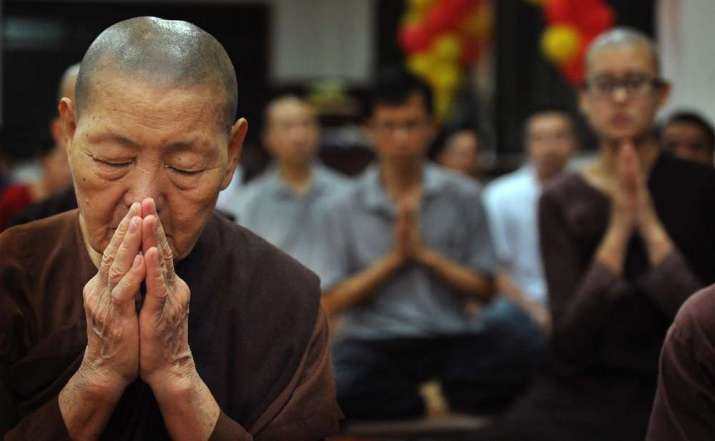 A Theravada Buddhist nun. From pixabay.com
A Theravada Buddhist nun. From pixabay.com“The times, they are a-changing,” sang Bob Dylan. Old prejudices about the ability of women to lead organizations are receding. Across the world, women are assuming leadership positions and are correcting long-standing assumptions, many of them sexist. As women assume more prominent and senior roles, the discussion about the position of women in religious institutions cannot help but follow.
In this commentary, we do not wish to rehash Buddhism’s philosophical or theological bases for gender equality, about which plenty of books have been written. Indeed, gender is, at the ultimate level, empty of inherent, independent existence. What is of concern here is not Buddhism’s intellectual foundations for gender equality, but the checkered history in regard to gender relations.
Professor of religious studies Amy Holmes-Tagchungdarpa observes that: “Historically, as Buddhism has traveled, local cultural attitudes toward women have influenced the opportunities provided for women in complex ways, as in denying full ordination to women in Sri Lanka and Tibetan societies. On the other hand, Buddhism has also opened up new opportunities, particularly in Confucian societies of East Asia, where it allow[ed] women to attain literacy and spiritual agency. . . . This array of attitudes illustrates the diversity of Buddhism, or perhaps more accurately, Buddhisms, and the importance of considering the agency of human communities, not just textual authorities, in providing women opportunities.” (Berkley Center for Religion, Peace & World Affairs)
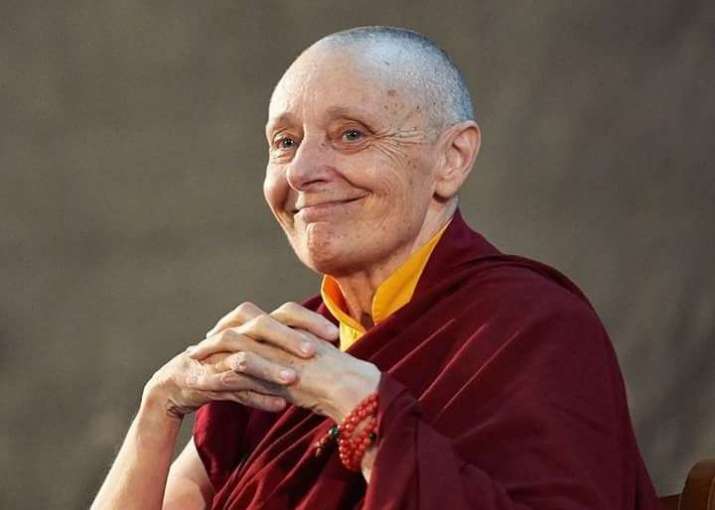 Jetsunma Tenzin Palmo. From textos.educacionesencial.org
Jetsunma Tenzin Palmo. From textos.educacionesencial.orgThe late Rita Gross, a pioneering feminist Buddhist scholar, has noted that the vast majority of authoritative voices in the Buddhist religion have been those of men. Yet Western Buddhism (a Buddhism of converts) offers a tantalizing alternative, even if patriarchal structures of authority remain the norm. She argued rightly that the arrival of many Asian teachers to the Canada, Europe, and the United States, and the large number of European and American conversions in the 1960s and 1970s coincided with the second wave of feminism. “The women most likely to be attracted to Buddhism were not about to play a secondary, supportive role to enable men to study and practice while they provided domestic services. These women insisted that if study and practice were good for men, they would also be good for women, and they took up these disciplines enthusiastically.” (Public Broadcasting Service)
This new attitude should be credited not only to the pioneering feminists, but also to the Asian teachers, who in the true spirit of Dharma saw that Buddhism needed to be molded in the image of the society it diffused through, rather than imposing cultural norms and preoccupations. The women asked for teachings, and a student’s request to be taught is the most important prerequisite for the doctrines’ transmission. Also, since women were participating with men in Buddhist gatherings, this “hippie” generation of Asian teachers assumed that North America had different gender norms and decided to work with these new norms, and not against them. “The lucky coincidence of feminism and the arrival of Buddhist teachers must be noted again, for if these teachers had arrived 10 or 20 years earlier, in the 1950’s, the situation would have been very different.” (Public Broadcasting Service)
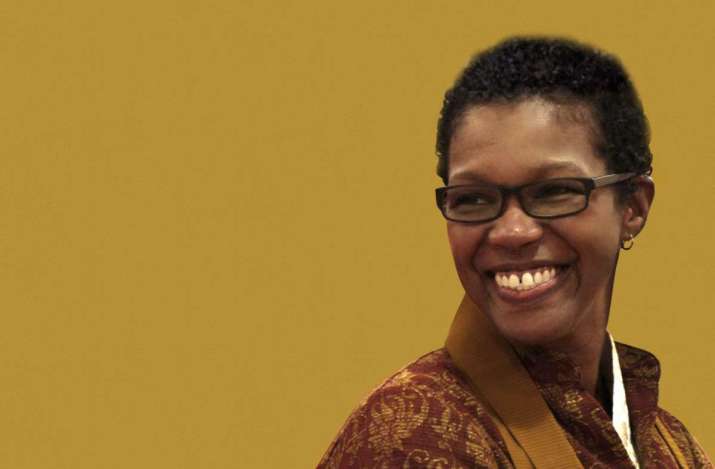 Zen priest angel Kyodo williams. From teacher.angelkyodowilliams.com
Zen priest angel Kyodo williams. From teacher.angelkyodowilliams.comThe convergence of Buddhist and feminist thought, in other words, was a historical fluke—or, more generously, karmic serendipity. Now it’s up to the current and future generations to work with what has played out in North America and is spreading across the Buddhist world, which is the emergence of women as Buddhist teachers and institutional heads. It is not a win-lose situation. What’s being discussed is a move to bring women to the table, not to exclude men from it. Three things that need to be done come to mind:
- Actively seek out women interested in serving the Buddhist dispensation in leadership roles. While there are those who might criticize gender quotas as “forcing” equalization, it is a legitimate approach when leadership positions are drawn exclusively from a pool of men. What is to be avoided is tokenism: rushing to pick and elevate a woman just because of her gender, without any regard for her skills, experience, or qualifications. Avoiding tokenism is directly related to our next suggestion:
- Provide women with the opportunity to obtain adequate preparation and training. It’s an all-too-common story: in the rush to promote women, religious charities or monastery boards scramble to find a woman they trust, but neglect to prepare them for the complexities and rigors of a leadership position. Thrown into the deep end, without learning the ropes and sufficient mentoring and coaching, female leaders can feel dispirited and might eventually withdraw from their roles—not because they were lacking competence or drive, but because they, perhaps not quite deliberately, were sabotaged by a lack of support. Organizations need to take a long hard look at themselves and honestly reflect: if women aren’t given the kind of encouragement and resources that male leaders have traditionally enjoyed, a self-fulfilling prophecy might be about to unfold.
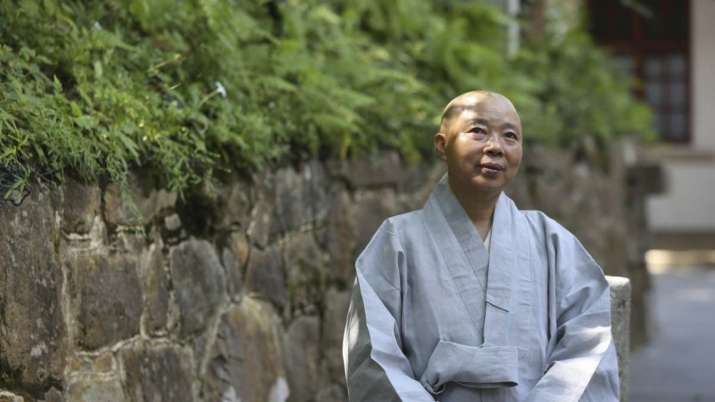 Jeong Kwan, a Korean nun famous for her temple food. From scmp.com
Jeong Kwan, a Korean nun famous for her temple food. From scmp.com- Listen to women’s stories and be open to discomfort and reform. The true application of the Buddhist spirit is to be open to different ideas that might challenge our assumptions about the world, and to find that our intellectual edifices do not rest on any inherent footing. In a world conditioned by patriarchy, this will always be hard for even the most constructive and forward thinking of men, but it is an endavour they should stive to undertake in as much as they left behind their conventional ways of viewing the world when they started studying the scriptures.
There are critiques of movements like the Twitter hashtag #metoo, which highlighted sexual harassment by men at the very highest levels of American (and now also Western and Chinese) politics, media, and entertainment. Similar critiques were voiced about films like Star Wars Episode VIII: The Last Jedi, which offered an unprecedented number of female protagonists and characters in positions of authority. The considerable backlash against them reveals that something about the increasingly visible women in real life and in fiction feels “wrong” or somehow strange to many accustomed to the previous “male-oriented” status quo.
There are growing pains in the dialogue about female leadership, and those who feel challenged in how they’ve always perceived the world and conducted themselves must be prepared to feel discomfort. On the other hand, feminists are also increasingly realizing that true equality can’t be achieved without the help of men (certainly not in Buddhism), and that truly authentic feminism must build a more complete picture of leadership that takes into account the place of women and men alike.
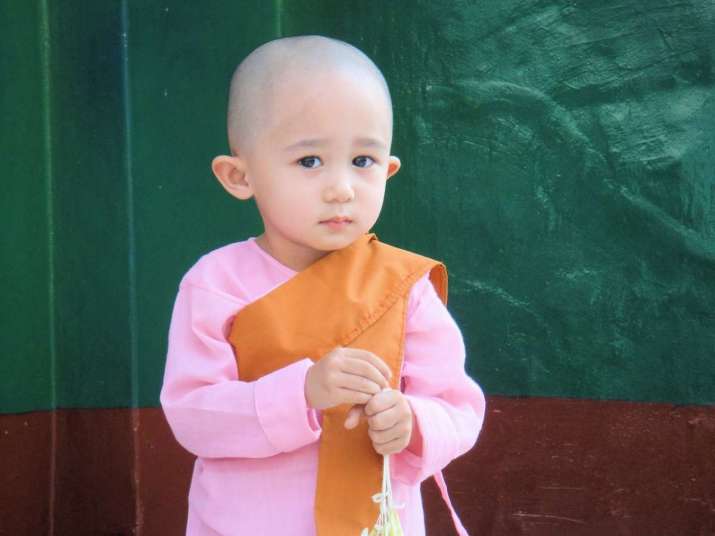 Young nun in Myanmar. From pixabay.com
Young nun in Myanmar. From pixabay.comBuddhism isn’t monolithic and it’s easy to reify Buddhism into either a “pro-feminist” or “misogynistic” tradition. It is neither. Or more accurately, it can be both, depending on who is shaping it. With an increase of women in leadership positions, we feel tentatively positive about the gradual readjustment of the gender imbalance in Buddhist structures of authority and leadership.
Buddhistdoor Global’s special issue for 2018 focuses on the personal experiences of Buddhist women across the world, both lay and monastic. Dedicated to their voices and their stories, it is being published throughout this year to support the journey of all women on the Buddhist path.
See more
Can Women Become Leaders in the Buddhist Tradition? (Berkley Center for Religion, Peace & World Affairs)
"How American Women Are Changing Buddhism" By Rita M. Gross (Public Broadcasting Service)
Related features from Buddhistdoor Global
Buddhistdoor View: A Tribute to Women of All Buddhist Traditions
View from the Audience: Looking Back on the 15th Sakyadhita Conference in Hong Kong
"There's a lot of catching up to do" - Full Interview with Karma Lekshe Tsomo
Related news from Buddhistdoor Global














